It has been a shocking few weeks for crypto. Revelations of extreme misconduct at FTX – and the related fallout associated with it – have shaken the industry. The full scale of impacts remains to be seen. While we all continue to unpack what happened, it’s important to think about where we go from here.
The key takeaway that this incident underscores is what many in the industry and beyond have been saying: regulation is needed, and it’s needed now.
Headlines are focusing on one small group of actors and one story. But this does not represent the industry. The builders I know explore diverse use cases, challenge conventional operating models, and are working everyday to put ownership back in users’ hands. Indeed, for many, the story is emblematic of the issues that drew them to crypto/web3 in the first place.
We are facing a difficult question: How do we prevent something like this from ever happening again, while ensuring that critical innovation that can meaningfully change systems and lives around the world is not stifled as a result?
Industry Continues Calls for Clarity
At the Crypto Council for Innovation, our mission has been to encourage the responsible regulation of this nascent and complex technology. We have been bringing together leaders from across government, business, technology, academia and non-profit sectors to discuss these topics.
This isn’t a new conversation. The industry has been calling for regulatory clarity, transparency and openness for years. As we have seen, operating under inconsistent rules of the road and ex-post regulation by enforcement does not work. Careful conversations and diving into the weeds are what is needed to get these policies right.
Policymakers should keep the following critical principles in mind as they navigate the various options on the table:
- Regulation must protect users, investors, and businesses.
- The U.S. must remain a leader in the global financial system and preserve its innovative edge.
- Policies should seek to increase access, promote efficiency, and reduce costs.
Education and dialogue are more critical than ever in ensuring that frameworks are not simply responding to the news cycle. We are looking forward to continuing to engage collaboratively with global regulators and policymakers on these topics.
There’s a lot going on in this vein. For those of us focused on policy and regulation, the work hasn’t stopped and will continue. In addition to answering questions from the Hill, the press and many others, here are important issues that the Crypto Council has been moving forward on while the FTX story unfolded:
- Financial Stability Board consultation on crypto and stablecoins.
- OFAC re-sanctions Tornado Cash.
- MiCA’s progress in Europe.
- Singapore consulting on its framework.
- The UK Financial Services and Markets Act.
- Hong Kong accelerating its focus on crypto assets.
- Governments experimenting with technology (UK is minting NFTs, Japan started a DAO, etc)
- Potential for a “Crypto Congress” following midterm elections in the United States.
- The industry self-organizing around risk management best practices.
- South Korea set to finalize a comprehensive framework by next year.
While all are important, let’s dive into three right now – and what they mean for crypto. More to follow next week.
1. MiCA’s progress in Europe
The European Union made headlines this summer when it reached an agreement on its Markets in Crypto-Assets (MiCA) bill, which was accompanied by its Transfer of Funds Regulation (TFR). Together, the legislation represented the most comprehensive crypto framework in the world to-date.
As one EU official summarized, the bill “is intended to bring the unregulated cryptoasset market under a financial-services regulatory framework, help root out bad actors, prevent market abuse, and limit the risks to consumers and market integrity.”
Importantly, what we saw this summer was just the first step – the political agreement. Now, the work of turning the framework into reality is underway.
The final text is ready, but it is now going through a legal review. The updated expectation is that the official journal publication will take place in March 2023, with entry into force in April 2023. In the meantime, regulators are starting to prepare for their implementation roles.
What can we learn? Moving forward on policy and regulation isn’t impossible – but it does require political will. In the EU, leaders skeptical of crypto were open to listening and learning, as long as the approach was collaborative and humble. We also saw the importance of an emphasis on tech neutrality. Regulation of any underlying technology itself risks anointing winners that may or may not be the optimal choice for constituents.
The Crypto Council looks forward to continued engagement with regulators – including the European Supervisory Authorities and national supervisors – on the specifics of implementation.
2. Potential for a “Crypto Congress” following midterm elections in the US
The United States held its midterm elections this month – and we saw the results of the crypto vote show up in a real way. Our pre-midterm poll found that 1 in 7 voters own crypto, along party lines and in key voter demographics – for example, racial minorities, young people, and independents.
Results speak for themselves: All 19 of our Digital Future Award recipients who were on the ballot won their races.
Importantly, crypto has well-known and well-regarded champions within Congress. As highlighted in our post-midterm Twitter space: “The industry has really made great inroads with very serious people who understand… long-term policy implications from the developments in this space.” This is critical because both industry and voters want clear rules of the road – this is key to protecting consumers and innovation.
Crypto is a bipartisan issue. Collaboration across the aisle will be key to getting legislation over the line in the 118th Congress. As former Senator Cory Gardner put it: “As people are looking for things to work on together, crypto is going to be one of those issues. And it is one of those issues that I think is going to bring Congress together in a bipartisan manner.”
3. UK Autumn Statement & the Financial Services and Markets Act
It’s been a busy time for the UK between leadership changes, rising inflation, and significant attention on their financial markets. Recently, Chancellor Jeremy Hunt presented the Autumn Statement, outlining priorities for the UK economy. Within the three priorities of stability, growth, and public services, there was a clear emphasis on digital policy.
This comes amidst progress on the Financial Services and Markets Bill, which would give regulators authority over crypto and builds upon rulemaking around crypto promotions announced earlier this year. According to parliamentarian Andrew Griffith: “The inclusion of crypto in the scope of the bill will make sure the country’s Treasury is equipped to respond to developments in the crypto sector quickly and deliver regulation in an “agile” way that is consistent with the country’s broader approach to regulating the financial services sector.”
The UK expects to release its public consultation on this framework later this year. We expect increased activity and announcements from the government over the next few months. In recent meetings with the Crypto Council over the past couple of weeks, regulators and policymakers alike have reaffirmed their commitment to making the UK a hub for crypto innovation.
Going forward with crypto regulation and policy
Reactive, panicky policies are not the solution. Now is the time for thoughtful, careful discussion with lawmakers and stakeholders to ensure the US crypto regulatory framework promotes safety and soundness, protects consumers, preserves our innovative edge, and prevents bad actors.
Policymakers should take care to not anchor on this one shameful example – the actions of a few, however appalling, are not reflective of the technology itself nor of the diversity within this vibrant industry.
This is also the time for the industry to focus on first principles: humans are almost always the ultimate beneficiaries of even the most decentralized technology, and safety and soundness matter. Many are already focused on building a safer, more inclusive system. Continuing to do so, while incorporating lessons from the last few months, is the best way to realize the promise of a better digital future for all.

























